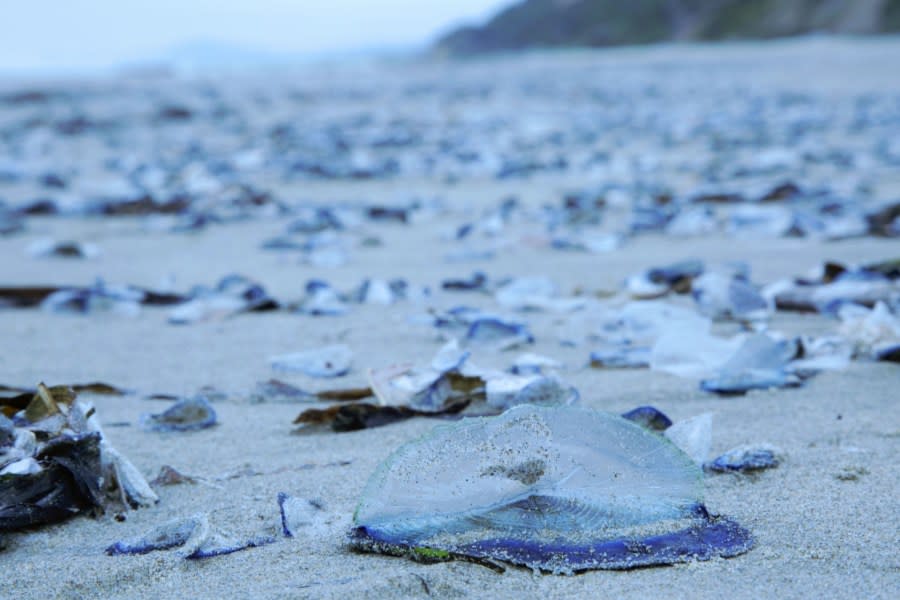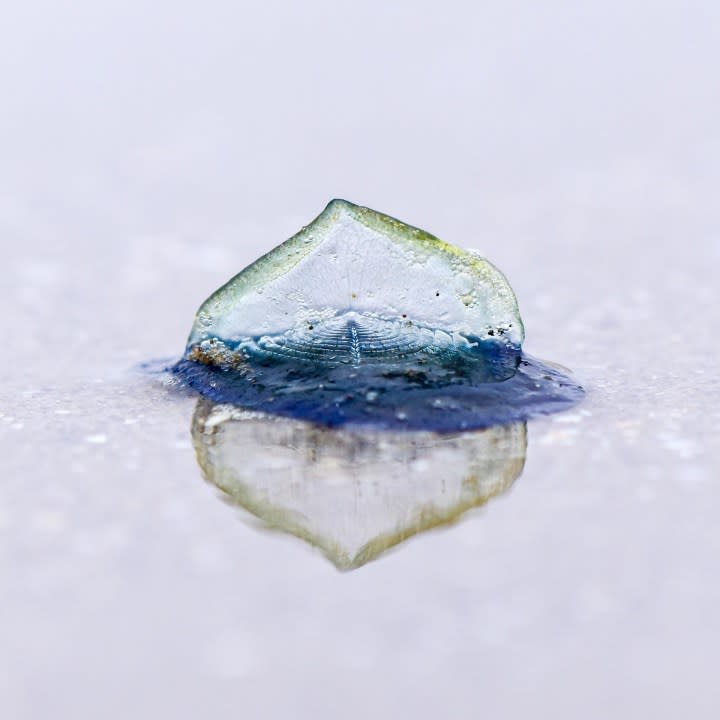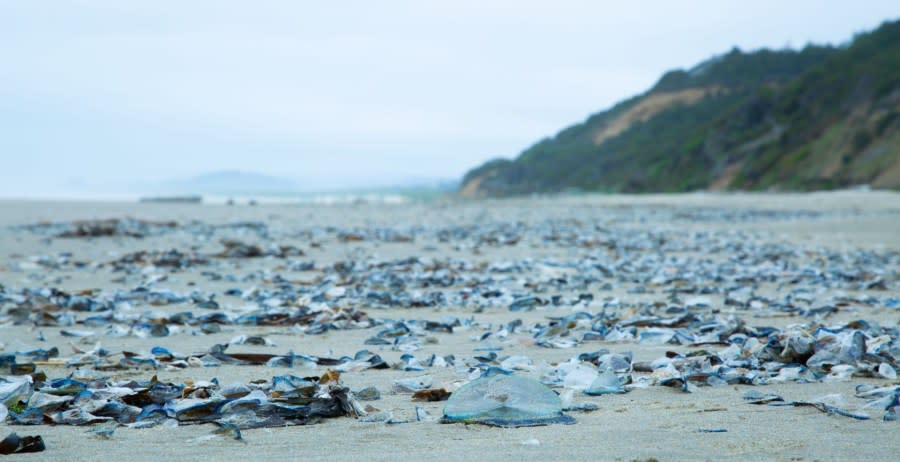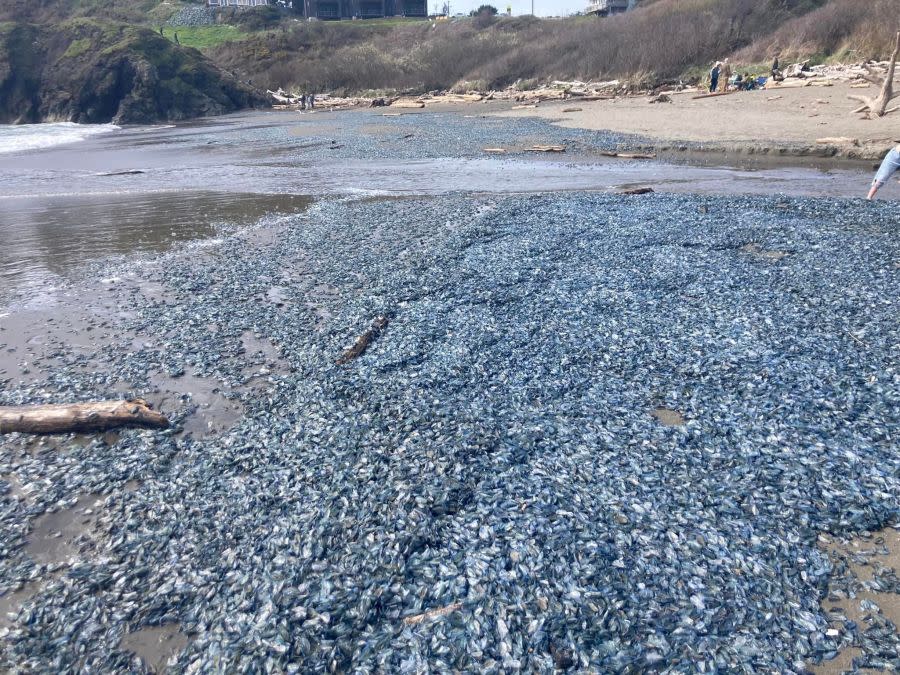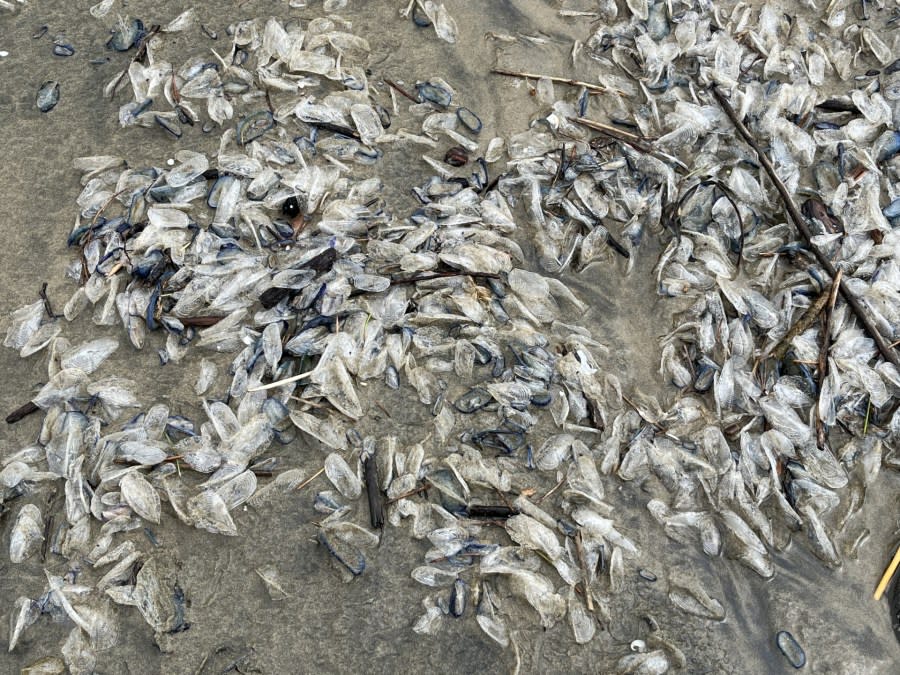Smelly, jellyfish-like creatures wash up on Oregon beaches
PORTLAND, Ore. (KOIN) — Cannon Beach is currently swarmed with hordes of by-the-wind sailors, mostly harmless jellyfish-like creatures that float along the ocean’s surface.
Pacific killer whales are different species, scientists say
By-the-wind sailors — formally known as velella velella — are predatory animals that feed on plankton by stinging them with their blue tentacles. The slimy, blue discs are related to jellyfish, sea anemones, corals and hydroids. But unlike jellyfish or the Portuguese man o’ war, by-the-wind sailor stingers are rarely harmful to humans. However, beachgoers are encouraged to avoid touching them, the Oregon Coast Aquarium warns.
“Velella feed by stinging and capturing plankton with barb-tipped cells contained within their tentacles,” the Oregon Coast Aquarium states. “The venom is considered harmless to human beings, but beachcombers are cautioned not to touch any jellies or jelly-like animals found washed up on shore, as some may react more strongly to the venom than others. Other, more dangerous jellies like sea nettles might also be mixed in with velella.”
Velella velella, also known as by-the-wind sailors, washed up on the Oregon Coast. (Photo courtesy of the Oregon Coast Aquarium.) Velella velella by-the-wind sailors
City of Brookings can’t stop churches from feeding the homeless, judge rules
The slimy, sand-dollar-sized discs float around the ocean using triangle-shaped sails on the tops of their bodies. Because these creatures move where the wind takes them, they are sometimes victims of mass strandings that occur on the Oregon Coast during the spring and summer months. Oregon Coast Aquarium spokesperson Courtney Klug told KOIN 6 News that these strandings are known as “blue tide.”
“Heavy winds and tides can push these invertebrates ashore en masse, so we’re more likely to see them following stormy conditions,” Klug said.
By-the-wind sailors in Port Orford on March 26, 2024. (Photo by Marty Trahan) By-the-wind sailors begin to stink as they die-off after washing ashore. (Pictures takes on March 3, 2024 by Oregon State Parks.)
These strandings cause the by-the-wind sailors to die off by the masses, resulting in a rotten smell along affected beaches.
“Velellas can get smelly after a couple of days,” Klug said.
In recent days, beachgoers have reported by-the-wind-sailor die-offs in Cannon Beach, Newport, Nehalem, Seal Rock and Port Orford.
For the latest news, weather, sports, and streaming video, head to KOIN.com.
